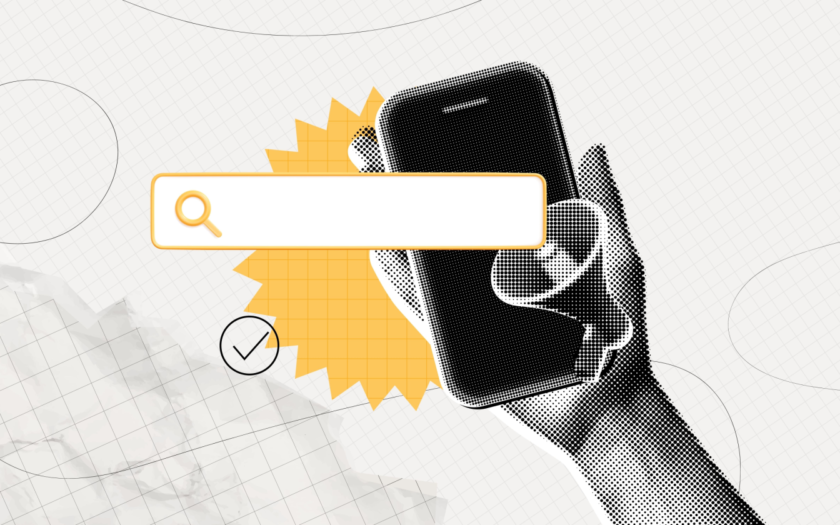Data-Driven Decisions
As the B2B influencer marketing landscape matures, data-driven decision-making becomes increasingly crucial.
Predictive analytics will allow brands to anticipate audience behavior and tailor their campaigns accordingly, while big data will provide valuable insights for precise audience targeting and engagement strategies.
By leveraging data effectively, brands can optimize their influencer marketing efforts and ensure they are reaching the right people with the right message at the right time.
Diversity And Inclusion
The B2B world is no longer a monochrome landscape. Consumers demand authenticity and representation, urging brands to embrace the richness of diversity and inclusion.
We must actively seek partnerships with creators from all walks of life, weaving a tapestry of perspectives and experiences into our marketing campaigns.
This not only ensures that your brand resonates with a wider audience but also fosters a sense of belonging and inclusivity within your community.
The Rise Of Specialized Influencers
Gone are the days of one-size-fits-all influencers. Today, we see the rise of specialized influencers who possess in-depth knowledge and expertise in specific niches and industries.
These “micro-influencers” may have smaller follower bases compared to mainstream figures, but they offer unparalleled reach and engagement within their targeted audience.
By partnering with specialists, brands can ensure their message resonates deeply with the right individuals, maximizing the effectiveness of their campaigns.
Future B2B Influencer Marketing Trends Across Industries
While the core trends of B2B influencer marketing resonate across industries, each sector faces unique opportunities and challenges.
Let’s delve into the crystal ball and forecast some industry-specific trends poised to shape the future.
Tech And SaaS
These days, the tech and SaaS industry is moving at lightning speed, and when it comes to B2B influencer marketing, it’s important to stay nimble and creative to keep up with the pace.
Imagine partnering with tech influencers who are early adopters of emerging technologies, showcasing your latest innovations through engaging demos and reviews.
This will help you reach a highly targeted audience and build brand awareness among tech enthusiasts and decision-makers.
Challenges:
Technical expertise: Ensuring influencers have the technical knowledge to accurately represent your product or service.
Competition: High saturation of tech influencers, making it crucial to choose the right fit for your brand.
Case Studies:
Microsoft’s #SurfacePro campaign: Partnered with creative people from various professional backgrounds to showcase the Surface Pro’s capabilities through creative video content, driving significant sales and brand engagement (Green, 2022).
IBM’s #ProjectDebater campaign: Collaborated with AI experts to create a debating AI program, generating widespread media coverage and thought leadership in the AI space (Stetka, 2024).
Healthcare And Pharma
B2B influencer marketing in healthcare faces stringent regulations and ethical considerations. Transparency, compliance, and building trust are paramount.
Imagine collaborating with healthcare professionals who are active on social media, sharing valuable educational content and addressing sensitive topics with accuracy and empathy.
This can help you raise awareness about your healthcare solutions and build trust among medical professionals and patients alike.
Trends:
Rise of micro-influencers: Partnering with healthcare professionals who have smaller, highly engaged communities can be more effective than collaborating with celebrities.
Emphasis on patient stories: Sharing real patient experiences and testimonials through influencer content can build trust and emotional connection with the audience.
Challenges:
Regulatory compliance: Ensuring all influencer content adheres to strict regulations and ethical guidelines.
Sensitive topics: Navigating sensitive health-related issues with accuracy and sensitivity.
Finance And B2B Services
In the world of finance and B2B services, trust and authority are essential.
Imagine partnering with industry experts and thought leaders who can share their insights and expertise through webinars, blog posts, and social media content.
This can help you position yourself as a credible and reliable partner, attracting potential clients and expanding your reach within the industry.
Trends:
Focus on long-term partnerships: Building long-term relationships with influencers fosters deeper trust and creates more impactful campaigns.
Content diversification: Utilizing a variety of content formats, such as infographics, videos, and podcasts, to reach a wider audience and cater to different learning styles.
Challenges:
Overcoming skepticism: Building trust and overcoming potential skepticism in a traditionally conservative industry.
Maintaining compliance: Ensuring all financial information and claims are accurate and comply with regulatory standards.
These industry-specific trends offer just a glimpse into the exciting future of B2B influencer marketing.
By understanding the unique challenges and opportunities within each sector, brands can tailor their strategies and collaborate with the right influencers to achieve their goals.
Beyond The Numbers: Measuring The Impact Of Creator-First
The success of these campaigns extends beyond traditional metrics like clicks and impressions.
Creator-first strategies focus on deeper engagement, brand affinity, and, ultimately, driving business impact. Here are some key KPIs to consider:
Social media engagement: Likes, comments, shares, and mentions are indicators of audience interest and interaction with creator-generated content.
Website traffic and conversions: Analyzing the impact of influencer campaigns on website traffic and conversions helps measure effectiveness in driving leads and sales.
Brand awareness and sentiment: Tracking brand mentions and sentiment analysis provides insights into how audiences perceive the brand and its message.
Sales and revenue growth: Ultimately, the success of Creator-First partnerships is measured by their ability to contribute to the brand’s bottom line.
By focusing on these KPIs, brands can gain valuable insights into the effectiveness of their creator-first campaigns and demonstrate the tangible impact they have on their business objectives.
To read the full book, SEJ readers have an exclusive 25% discount code and free shipping to the US and UK. Use promo code SEJ25 at koganpage.com here.
More resources:
Featured Image: Accogliente Design/Shutterstock
